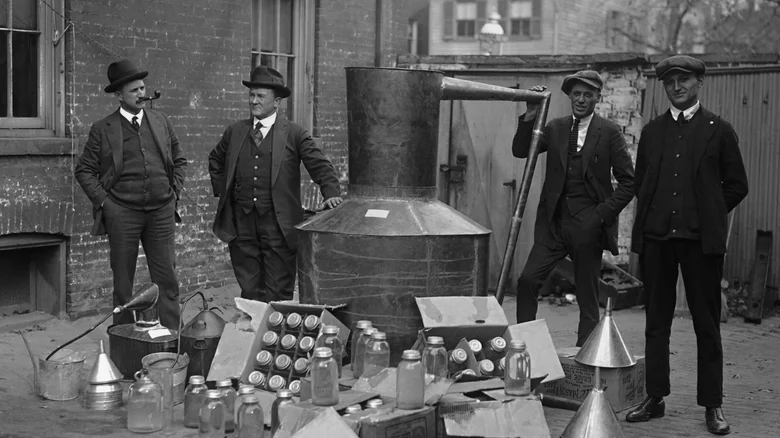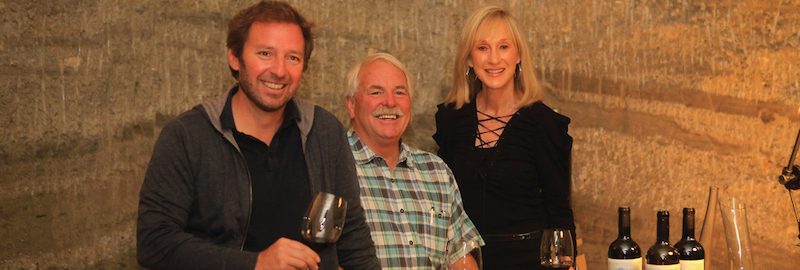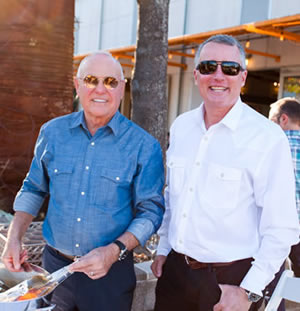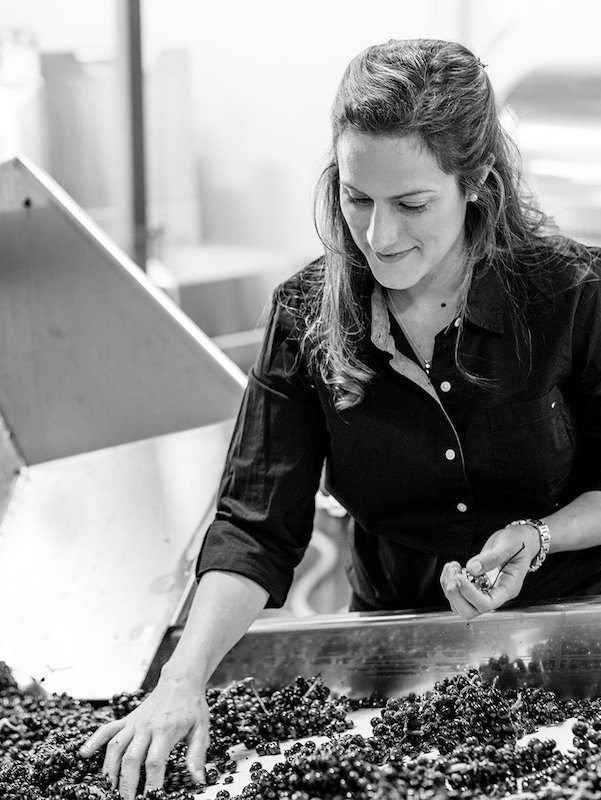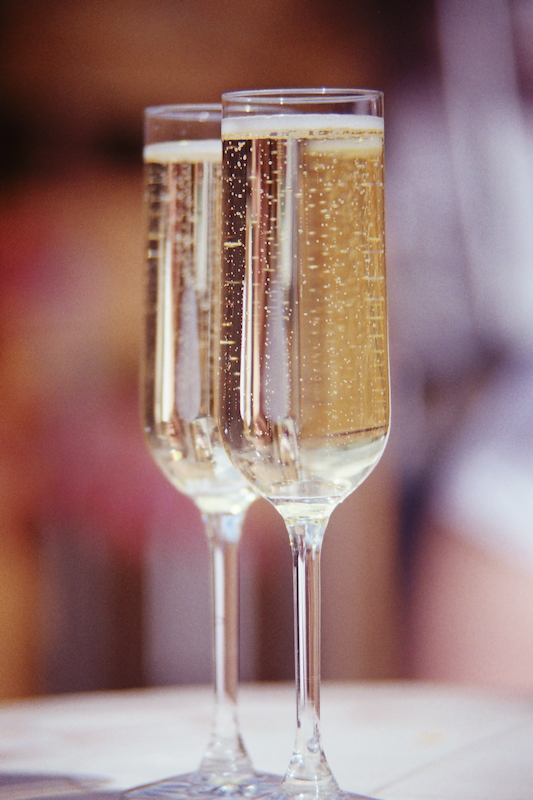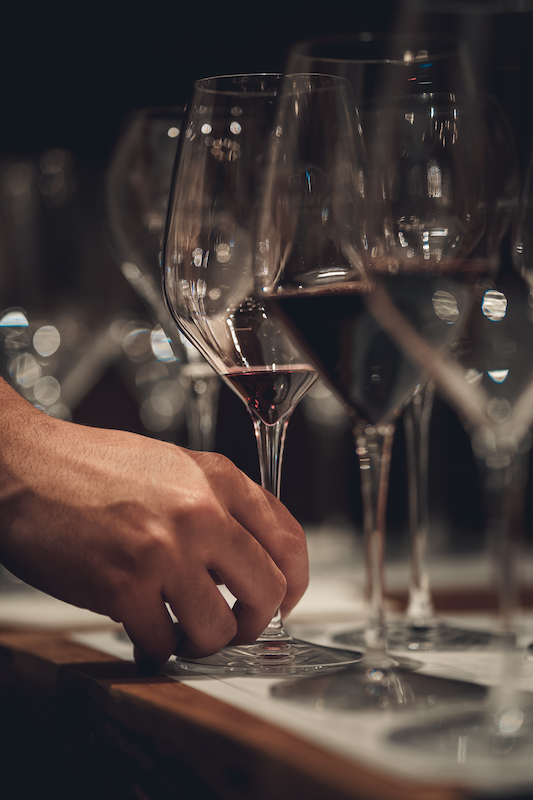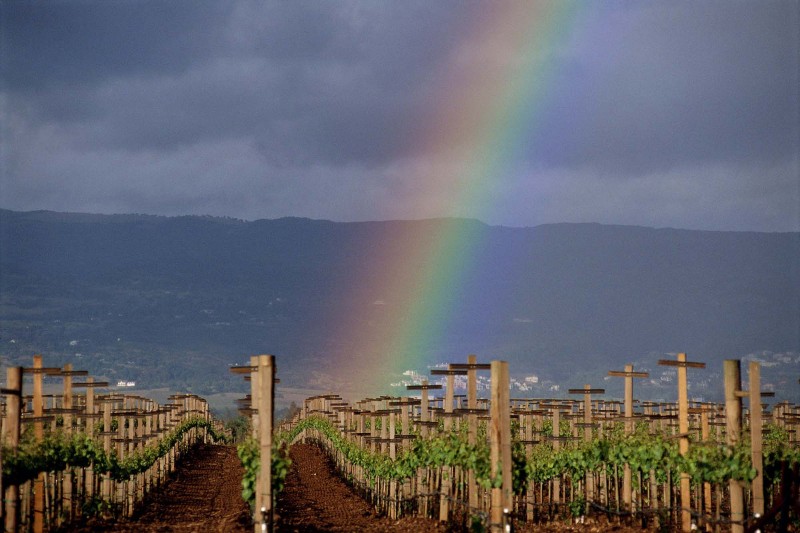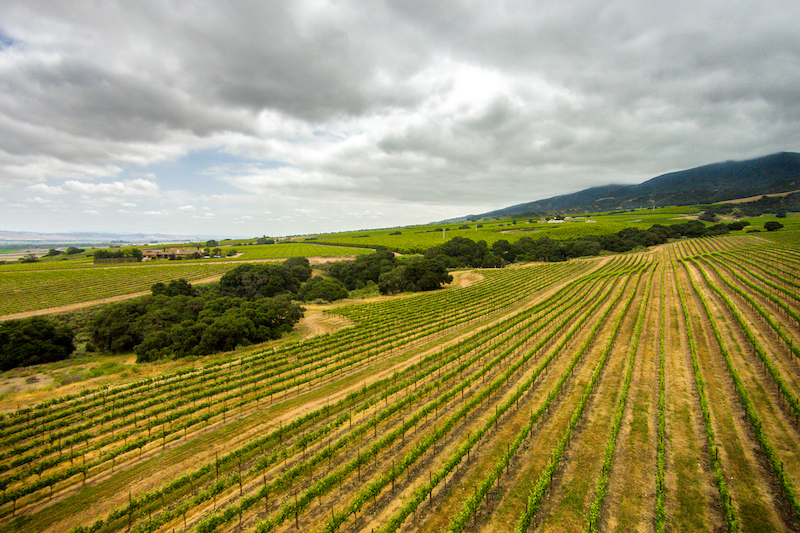Inspired by late Japanese farmer Masanobu Fukuoka, this fully hands-off method of viticulture is attracting a few intrepid global producers
 |
| Photo courtesy of Maria Jose Granier. |
As organic, biodynamic, and
regenerative viticultural methods continue to increase in popularity, a handful of brave winemakers are taking low-intervention wine growing a step further. The Fukuoka-inspired viticultural approach—a supremely hands-off style informed by late Japanese farmer and philosopher Masanobu Fukuoka—makes biodynamic and organic farming seem overly interventionist—conventional, even.
As a relatively atypical—and risky—approach, it’s not for everyone, but a small community of winemakers from Oregon to Okayama has applied the teachings to their viticulture programs. Some growers simply want to know if truly hands-off winemaking can be done, while others are attracted to Fukukoa’s alignment with nature and near-zero environmental impact. For a few others, hands-off winemaking is the only option; they simply don’t have the resources to afford modern equipment or vineyard preparations.
Can these trailblazers revolutionize the way the industry thinks about viticulture by crafting high-quality
wines from grapes grown, essentially, in the wild? Or will a potential lack of financial viability doom this philosophy to a failed experiment?
The Allure of ‘Do-Nothing’ Farming
Fukuoka is famous for popularizing so-called “natural farming.” His agricultural mentality was born from a disgust with post-war industrialized farming in Japan. It’s often called “do-nothing farming” and lives up to the billing, submitting to nature in lieu of calling on any outside or artificial inputs.
A biodynamic approach is non-natural and prescriptive, with a laundry list of to-do’s, many of which a vineyard may not actually need, believes Willamette Valley’s Tai-Ran Niew.
Working primarily with rice and citrus farms of all sizes, Fukuoka gained acclaim from the 1970s onwards. Generally, his method decries plowing, tilling, and the use of machinery in the field. It also advocates against the use of pesticides, herbicides, fertilizers, and even most forms of weeding. A true Fukuoka-modeled farm would not even have compost, as the process of preparing and applying the stuff is, by definition, interventionist.
Tai-Ran Niew, who started planting his eponymous vineyard in the northern Willamette Valley in 2015, was inspired by Fukuoka’s manifesto, One Straw Revolution, published in 1978. He is driven by the question: Can you grow high-quality wine grapes in the wild? Biodynamic and organic farming methods fall short here, Niew believes, as they’re essentially offshoots of conventional agriculture.
“The only difference between the two is that you’re spraying different things,” he says. So far, just five of his estate’s 80 acres are planted, but his rows are producing fruit against conventional wisdom.
 |
| Photo courtesy of Mark Stock. |
A biodynamic approach, Niew says, is non-natural and prescriptive, with a laundry list of to-do’s, many of which a vineyard may not actually need. Organic, while admittedly using better, more environmentally-friendly additives, still involves just that—inputs. Like Fukuoka, Niew prefers to essentially do nothing.
He does not till nor does he spray. “I use sun, air, and rainwater,” he says. “The whole point of the exercise is finding a natural way.”
At Damyanov Winery in the Struma River Valley of southwestern Bulgaria, Yane Damyanov and his family were similarly attracted by the notion of natural viticulture. To grow their
Cabernet Sauvignon,
Merlot, and Melnik (an indigenous grape), they eschew tilling and weed control. Instead of plowing, the team mows the vineyard, allowing for the organic residue to stay in the farm system, decomposing and rejoining the resident soils.
“In cultivating our vineyard, we are trying to be part of nature, not to dominate it,” Damyanov says. “The main concept is cooperation with nature and trying to restore and improve fertility, structure, and moisture capacity of the soil, which was in a way destroyed by human activity in the past.” Originally planted just after World War II, the estate was claimed by the communist state before returning to family hands in 1991.
The approach is quite holistic, though Fukuoka purists might take issue with some of Damyanov’s arguably “interventionist” methods: He scatters chopped-up canes from pruning throughout the vineyard, and post-harvest, pomace, and other natural byproducts from fermentation and pressing are spread atop the soil. The aim is to create a healthy and balanced environment wherein stronger plants persist and thrive. “With rainwater, the nutrients penetrate deeply into the soil to become food for microorganisms, thus restoring the wild micro life,” he says.
 |
| Niew Vineyards in the Willamette Valley. Photo courtesy of Niew Vineyards. |
A Tiny, Like-Minded Community
“The community is so small we are practically alone,” Niew says. Though they are few, there are others practicing Fukuoka-inspired viticulture, like Eric Texier in France and Son Allegre in Spain. Unsurprisingly, there are a few winegrowers in Japan following Fukuoka’s principles as well.
Kurambon in the Yamanashi Prefecture launched the same year Fukuoka was born, in 1913. It has become a well-known producer of
wine from the indigenous Koshu grape. Since 2007, the winery has subscribed to much of the Fukuoka method, with zero plowing, spraying, or weeding. Another esteemed name, Hirotake Ooka, recently left his winemaking post at Domaine de la Grande Colline in the Rhône Valley to return to Japan and focus on natural wine that’s made in a way Fukuoka would approve of.
In Bolivia’s Cinti Valley, Fukuoka-esque winegrowing exists for a very different reason: lack of resources. The poor South American nation boasts centuries-old vines planted by the Spanish in some of the highest-elevation sites on the planet. At Jardin Oculto, for example, founder Maria Jose Granier and vintner Nayan Gowda make wines like Moscatel and Vischoquena from vines that naturally crawl up the apple and quince trees on the property. Presently, they work with three growers over 10 acres of vines.
“All the work in these vineyards is done by hand,” says Granier. “This is due to the fact they are wild places and the growers cannot afford more than the most basic equipment.” Even achieving certifications, something Granier is interested in philosophically, is deemed too frivolous, as the money could be better invested in the community.
It’s not fully Fukuoka—they spray sulfur to deal with the rainy summer season—but the late Japanese farmer would appreciate both the polyculture at play and the light-handed touch. In addition to fruit trees, the vines share the sites with chiles, corn, and other crops. Livestock are released into the sites post-harvest. And the unchecked vines creep all the way up resident trees, to some benefit.
 |
The first release of Niew Vineyards’s Chardonnay.
Photo courtesy of Niew Vineyards. |
Granier says the extended vine shoots have more foliage, which translates to higher yields with wonderful ripeness. All that greenery, in turn, protects the vines from the elements. “We got a lot of hail this year and these vines were not affected,” she says. There’s no bird damage because there are other crops to distract them. And there’s no need to buy fertilizer as the sheep eat and process the native grass on site.
After practicing Fukuoka-inspired winegrowing for five or six years, Damyanov is pleased with the results. In the beginning, some of the vines suffered, but the estate is now home to stronger, disease-resistant vines. “The quantity of the crops is slightly decreased but the quality is higher, with ripe and concentrated fruits,” he says.
Is Fukuoka-Inspired Viticulture Viable?
With so few vintners practicing this hands-off farming technique, the question remains: Could Fukuoka-inspired winegrowing ever work on a large (or even moderate) scale?
In Bolivia, the Jardin Oculto team has been able to achieve healthy yields despite their Fukuoka-inspired approach. “We have been able to get as much as 60 kilos or 132 pounds per vine,” she says. “However, I would say that the average is around 22 kilos or 44 pounds.” This is more than twice as much as a conventionally-farmed vine will typically produce; Granier hopes to scale up by adding more growers soon.
But back in Oregon, Niew’s yields are much smaller: If his modest, five-acre vineyard produces 200 pounds of fruit this harvest, he says he will be happy. (For comparison, the Willamette Valley Wineries Association recommends limiting low-density vineyards to yields of two tons, or 4,000 pounds, or fruit per acre for quality wines.) Currently, Niew blends in fruit from elsewhere for his wines.
He’s the first to admit it might not work out. “Nature’s answer could be you shouldn’t have grapes,” he admits. But so far, it is working, even if on just five acres of
Chardonnay. He says that within five or six years, he has no doubt that we will make a full estate wine. Niew asks: “If it works for one vine, why couldn’t it work for a thousand vines? Ten thousand vines?”
Even if scaling up is possible—after all, Fukuoka himself worked effectively on large plots hundreds of acres in size—this method of farming may not be financially viable in the eyes of the average winery. Between equipment costs, labor, a tasting room, distributor markdowns, and more, most wineries can’t afford the patience required from a Fukuoka-inspired winegrowing stance. “I know of no
wine project where a spreadsheet isn’t built first,” Niew says.
Outside of a small crew hired to help him plant, Niew has done everything himself at the estate—something made viable by this hands-off approach. He also admits to having the luxury of being debt-free, since he doesn’t have expensive machinery and doesn’t need to make wine to supply a tasting room or distribution chain (he sells primarily by word of mouth). With overhead so low, the economics make sense for his operation.
“The biggest problem is lack of experience,” he adds. With so few adopting this approach with
wine, there’s simply no data to bank on. And Niew doesn’t expect others to follow his path; he recognizes the risk in winemaking, which relies on one annual harvest. But he still wants to find a way for the industry to get from three or four Fukuoka-inspired winegrowers to, say, ten.
“It needs a success story,” he says. If in a decade or two, Niew is making quality estate wines from vineyard rows he’s essentially done nothing with, it’s hard not to call that a success.
 The 18th Amendment to the Constitution of the United States of America, enforced by the Volstead Act, made illegal the sale, production, transportation, and consumption of "intoxicating liquors." Yep, the government once banned booze. The era known as Prohibition, which lasted for 13 years from 1920 to 1933, has been immortalized in countless films and documentaries. It gave rise to one of the most notorious criminals in American history (Al Capone) and over time proved to be one of the most ineffective government regulations of all time.
The 18th Amendment to the Constitution of the United States of America, enforced by the Volstead Act, made illegal the sale, production, transportation, and consumption of "intoxicating liquors." Yep, the government once banned booze. The era known as Prohibition, which lasted for 13 years from 1920 to 1933, has been immortalized in countless films and documentaries. It gave rise to one of the most notorious criminals in American history (Al Capone) and over time proved to be one of the most ineffective government regulations of all time. Sacramental wine, also known as altar or communion wine, is an extremely important component of Catholic Mass. As we see in "Matthew" 26: 27-28, while at the Last Supper, Jesus took a cup of wine and said: "'Drink from it, all of you, for this is the blood of my covenant, which will be shed on behalf of many for the forgiveness of sins.'" Thus Jesus shared the first communion among the disciples. The practice has continued in Catholic Mass ever since.
Sacramental wine, also known as altar or communion wine, is an extremely important component of Catholic Mass. As we see in "Matthew" 26: 27-28, while at the Last Supper, Jesus took a cup of wine and said: "'Drink from it, all of you, for this is the blood of my covenant, which will be shed on behalf of many for the forgiveness of sins.'" Thus Jesus shared the first communion among the disciples. The practice has continued in Catholic Mass ever since. The California wine industry of the early 20th century was not the powerhouse it would become by centuries end. Grapes and wine had been grown and produced in California since the 18th century, and by 1919 the state was number one in the country in terms of wine production and dedicated acreage. Then, of course, Prohibition was enacted and the fledgling industry was plunged into a maelstrom of uncertainty. However, luck was on their side.
The California wine industry of the early 20th century was not the powerhouse it would become by centuries end. Grapes and wine had been grown and produced in California since the 18th century, and by 1919 the state was number one in the country in terms of wine production and dedicated acreage. Then, of course, Prohibition was enacted and the fledgling industry was plunged into a maelstrom of uncertainty. However, luck was on their side.
